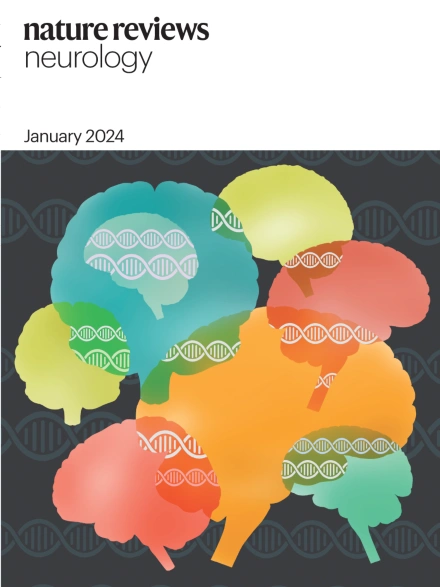评估进展期多发性硬化症的疾病进展和治疗反应
IF 28.2
1区 医学
Q1 CLINICAL NEUROLOGY
引用次数: 0
摘要
进展期多发性硬化症的病理生理学具有多面性,因此对疾病进展和治疗反应的评估提出了巨大挑战。传统的临床测量方法,如 "残疾状况扩展量表"(Expanded Disability Status Scale),在全面反映疾病和治疗效果方面存在局限性。先进的成像技术,包括核磁共振成像和正电子发射计算机断层扫描,已成为评估神经退行性病变过程的重要工具,包括适应性免疫和先天性免疫各自的作用、大脑和脊髓萎缩的详细情况、病变动态和灰质损伤。脑脊液和血液生物标志物的潜力日益得到认可,其中神经丝轻链水平是神经轴损伤的一个显著指标。此外,患者报告的结果对于反映疾病进展和治疗效果的主观感受至关重要,包括疲劳、认知功能和整体生活质量等方面。未来,数字技术和可穿戴设备在研究和临床实践中的应用有望增强我们对功能障碍和疾病进展的了解。本综述全面探讨了这些不同的评估工具,重点介绍了它们在准确评估进展期多发性硬化症的疾病进展和治疗效果方面的综合应用,从而为更有效的治疗策略提供指导。本文章由计算机程序翻译,如有差异,请以英文原文为准。
Assessing disease progression and treatment response in progressive multiple sclerosis
Progressive multiple sclerosis poses a considerable challenge in the evaluation of disease progression and treatment response owing to its multifaceted pathophysiology. Traditional clinical measures such as the Expanded Disability Status Scale are limited in capturing the full scope of disease and treatment effects. Advanced imaging techniques, including MRI and PET scans, have emerged as valuable tools for the assessment of neurodegenerative processes, including the respective role of adaptive and innate immunity, detailed insights into brain and spinal cord atrophy, lesion dynamics and grey matter damage. The potential of cerebrospinal fluid and blood biomarkers is increasingly recognized, with neurofilament light chain levels being a notable indicator of neuro-axonal damage. Moreover, patient-reported outcomes are crucial for reflecting the subjective experience of disease progression and treatment efficacy, covering aspects such as fatigue, cognitive function and overall quality of life. The future incorporation of digital technologies and wearable devices in research and clinical practice promises to enhance our understanding of functional impairments and disease progression. This Review offers a comprehensive examination of these diverse evaluation tools, highlighting their combined use in accurately assessing disease progression and treatment efficacy in progressive multiple sclerosis, thereby guiding more effective therapeutic strategies. The approval of therapies for progressive multiple sclerosis has heightened the need for thorough assessment of disease progression and treatment response. This Review provides a comprehensive summary of available and emerging techniques, including advanced imaging, fluid biomarkers and patient-reported outcomes, highlighting their combined use for the accurate assessment of disease.
求助全文
通过发布文献求助,成功后即可免费获取论文全文。
去求助
来源期刊

Nature Reviews Neurology
医学-临床神经学
CiteScore
29.90
自引率
0.80%
发文量
138
审稿时长
6-12 weeks
期刊介绍:
Nature Reviews Neurology aims to be the premier source of reviews and commentaries for the scientific and clinical communities we serve. We want to provide an unparalleled service to authors, referees, and readers, and we work hard to maximize the usefulness and impact of each article. The journal publishes Research Highlights, Comments, News & Views, Reviews, Consensus Statements, and Perspectives relevant to researchers and clinicians working in the field of neurology. Our broad scope ensures that the work we publish reaches the widest possible audience. Our articles are authoritative, accessible, and enhanced with clearly understandable figures, tables, and other display items. This page gives more detail about the aims and scope of the journal.
 求助内容:
求助内容: 应助结果提醒方式:
应助结果提醒方式:


